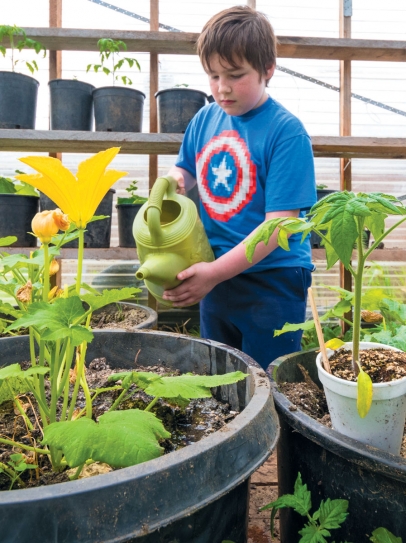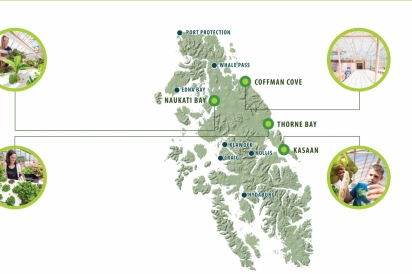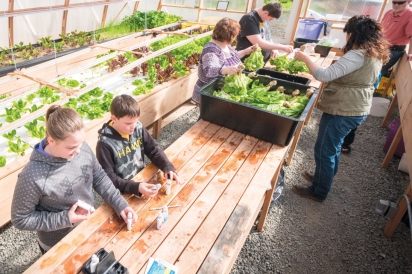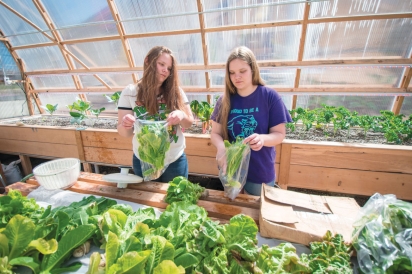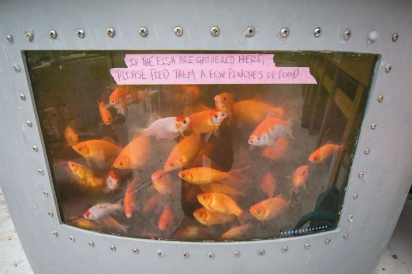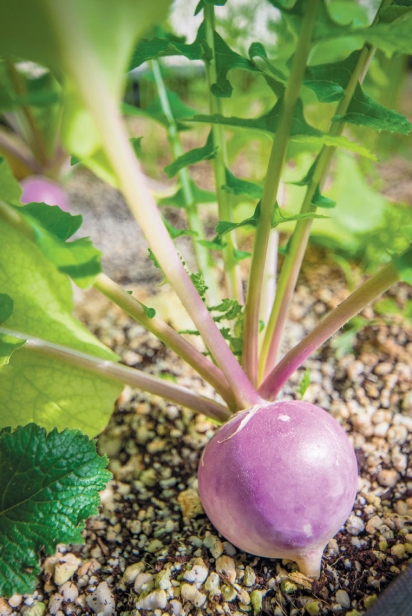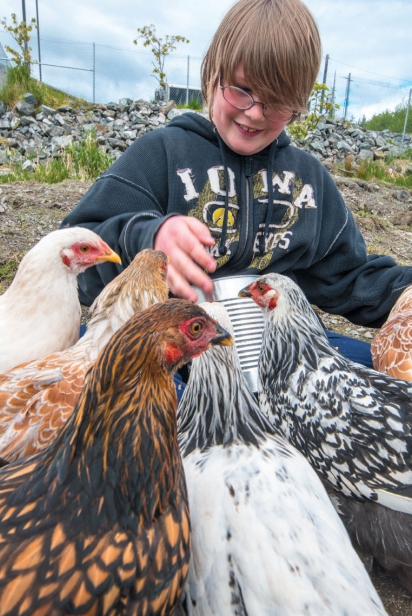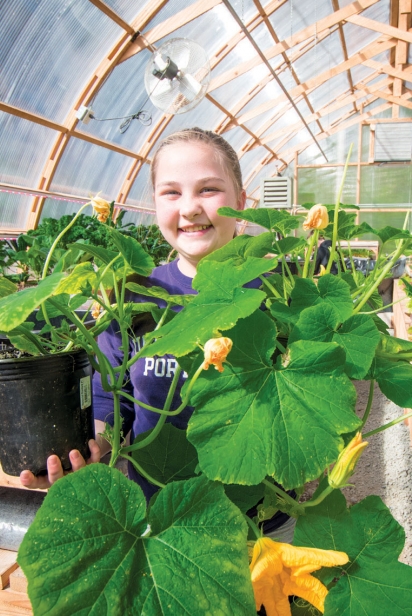Back to School
Swapping Eggrolls for Rainbow Chard
Across the country cafeteria trays aren’t often admired for their nutrition, freshness, or taste. In rural southeast Alaska, however, a dedicated school district and its greenhouse program are challenging that notion, while invigorating local economies, growing entrepreneurs, and gratifying taste buds.
Prince of Wales Island rests at the southernmost end of Alaska’s panhandle. The communities that make up this island are isolated, connected by seemingly endless miles of winding roads. The Southeast Island School District (SISD) is the major school district on Prince of Wales. It includes nine schools in unique communities from the small Haida village of Kasaan to old logging camps like Coffman Cove. All of these communities share some key challenges. Only one of them has a grocery store of considerable size, and the majority of the food is barged in. By the time these costly imported vegetables hit family plates, they are often wilted and unappetizing. Residents are in search of long-term economic solutions.
As in many small schools across the state, cafeteria lunches also lack crunch. “Small schools don’t have full time cooks and use mostly warming ovens to make eggrolls and burritos,” says Lauren Burch, the superintendent for Southeast Island School District on Prince of Wales Island. “That’s not what we should be feeding our kids.”
Those heat-and-serve lunches are not only uninspiring, they are costly too. “In my school district I lose roughly $100,000 a year even having a food program at all, and that’s gotta come from somewhere,” Burch says. The state’s purse strings aren’t loosening any time soon. Alaskans are witnessing the slicing and dicing of many key programs, including the whittling away of school funding. “State funding right now is traumatizing,” he admits.
But Burch—along with teachers, students, administrators, and community members of Southeast Island School District—is stepping up to face these challenges with gusto. What started with a few raised garden beds and a heat recovery system in one school has since grown into an island-wide phenomena. Kasaan, Naukati Bay, Thorne Bay and Coffman Cove have all replaced costly diesel generators with wood boiler systems and are using local wood to heat schools, greenhouses, and businesses. They are growing their own food, freshening up those lunch trays, and supporting the local economy as they revolutionize district thinking. This inspiring cohort is accomplishing all of this while giving the next generation of Alaska’s leaders a mouth-watering hands-on education.
So, how does it work? Let’s take a tour.
AQUAPONICS: FROM FISH TO FRESH VEGGIES
“Everything we do starts with those fish. All we have to do is feed them. We use their feces throughout the system as nutrients. We use the poop to grow the plants, in short speak,” explains Ieshia Searle. Ieshia is a senior at Thorne Bay High School and has been involved in the greenhouse since its' inception.
Eager goldfish crowd the window of a big central tank as Ieshia sprinkles a bit of fish food from above. A pump moves nutrient rich water from this tank through colonies of bacteria that filter the solid waste and convert fish feces into a form of nitrogen the plants can use. The water is then funneled into a series of pools where rafts of lettuce float beneath energy efficient LED lights. Different varieties of lettuce reach down into the water, absorbing nutrients while filtering and cleaning the pool. Ieshia pulls up a raft of butter lettuce, carefully inspecting the long spindly roots. “These are beautiful roots!” she declares. “Normally we harvest once a week, if not more, depending how our crops turn out. We actually stay pretty busy at the Thorne Bay greenhouse.”
Over in Coffman Cove, the largest and most impressive of the school greenhouses is over 6,000 square feet. At full capacity Coffman Cove will be churning out 800 heads of lettuce a week. That’s a lot of greens.
But, greens aren’t all that these greenhouses produce. Water continues to move through the aquaponics system into a series of beds containing a very fine matrix material made of coconut husks, which fully filters the water. It then returns to the fish and the loop continues, nourishing everything from turnips and tomatoes to green onions and basil. The vegetables are packaged by students, served in school lunches, and delivered and sold to shops where they reach families throughout Prince of Wales.
INTEGRATED LEARNING: GROUNDING THE ‘COMMON CORE’
All four greenhouses are using adaptations of an aquaponics system. Originally, Thorne Bay tested hydroponics, but made the switch to aquaponics in order to diversify their crops and offer students more integrated learning opportunities. “We wanted to dive more into the process. Hydroponics felt like a mystery machine where you pumped chemicals in and lettuce came out,” says Megan Fitzpatrick, the SISD science teacher. “Aquaponics is more of a natural ecosystem approach to growing.” She is able to teach the nitrogen cycle, soil chemistry, plant biology and more. Students are also able to craft experiments. “It’s more engaging. There is a lot of flexibility,” Fitzpatrick explains.
The greenhouse does not replace the curriculum, it brings it to life. Students spend one hour of class time each day working with the program and experiential learning opportunities abound—for more than just chemistry and the life sciences. Students across the island are investigating ways to make their greenhouse programs as self-sustaining as possible, while learning how to conduct feasibility studies, identify niche markets, gauge supply and demand, and brand their products. They are also looking at ways to improve the system, exploring opportunities for saving energy while increasing food production.
“Working at this greenhouse, I’ve been able to learn how to grow food while also being able to learn how to manage a business and keep it running without having to depend on the school district. At the start, we had the school district buying the seeds and the supplies that we needed, but now we are able to pay them back and make a profit,” Ieshia asserts with pride.
The four greenhouses are part of a larger program that also includes raising poultry, growing apples, making and selling tortillas and pizza dough, and a student-run restaurant and storefront. This engaging combination of projects creates opportunities for teaching business skills, life skills, employment skills and responsibility in a meaningful and hands-on way. “When kids first started here they were so shy and didn’t want to talk about the greenhouse,” says Fitzpatrick. “Now, so many people come by and visit the greenhouse from the community and even the lieutenant governor has stopped by. Kids are learning public speaking skills,” she says. “When students are engaged, they retain and when they retain they are more confident.”
AN IMPACT YOU CAN TASTE
Rural Alaska is hungry for fresh food and innovation. “Our schools absolutely are the heartbeat of the community and play a vital role in the sustainability of these communities,” attests Colter Barnes, the school greenhouse manager on the island. Southeast Island School District is looking at their students as powerful assets for building more resilient communities, supporting the local economy, and addressing food system challenges, while receiving a top-notch education.
“I think the progressive districts are out there saying, how can we do more with less funding, how can we generate revenue? I have a thousand students in my building, how can I give them real learning opportunities that are connected to standards, their diploma, their interests, and strengthens our community, but also generates revenue. There is so much you can do with kids, they want to engage,” Barnes says.
“We need to teach kids healthy eating skills. They need to use knives to cut their food, enough of these heat-and-serve open boxes,” adds Megan Fitzpatrick. “I saw these kids when they first started in the greenhouse. They weren’t eating the stuff and now they’re fighting over it. Seeing kids recognize the healthy benefits of eating fresh vegetables and recognizing that they can do this at home, that is a life skill they can carry on through their adult life. That to me is the most rewarding.”
Back at the school cafeteria, the rewards keep on growing as more and more students swap egg rolls for rainbow chard.
Prince of Wales Island
A Network of School Greenhouses
Prince of Wales Island is located at the southernmost end of Alaska’s panhandle and is home to 5,000 residents spread across small communities. Despite many economic challenges, these isolated rural communities stand at the forefront of the local foods movement. Four small schools on the island boast aquaponics greenhouses where students are growing, preparing, eating, and selling fresh vegetables in impressive quantities. Schools are accomplishing all this while giving the next generation of Alaska’s leaders an invaluable hands-on education. Southeast Island School District spearheaded this initiative with community support. Learn more about what makes each greenhouse unique.


